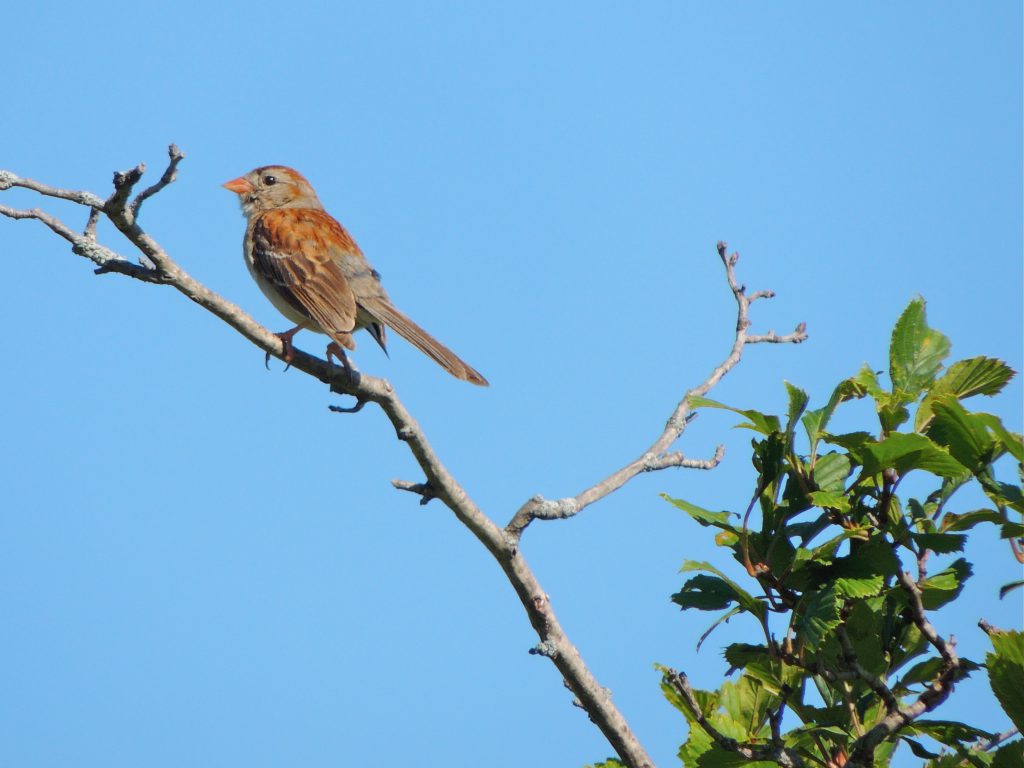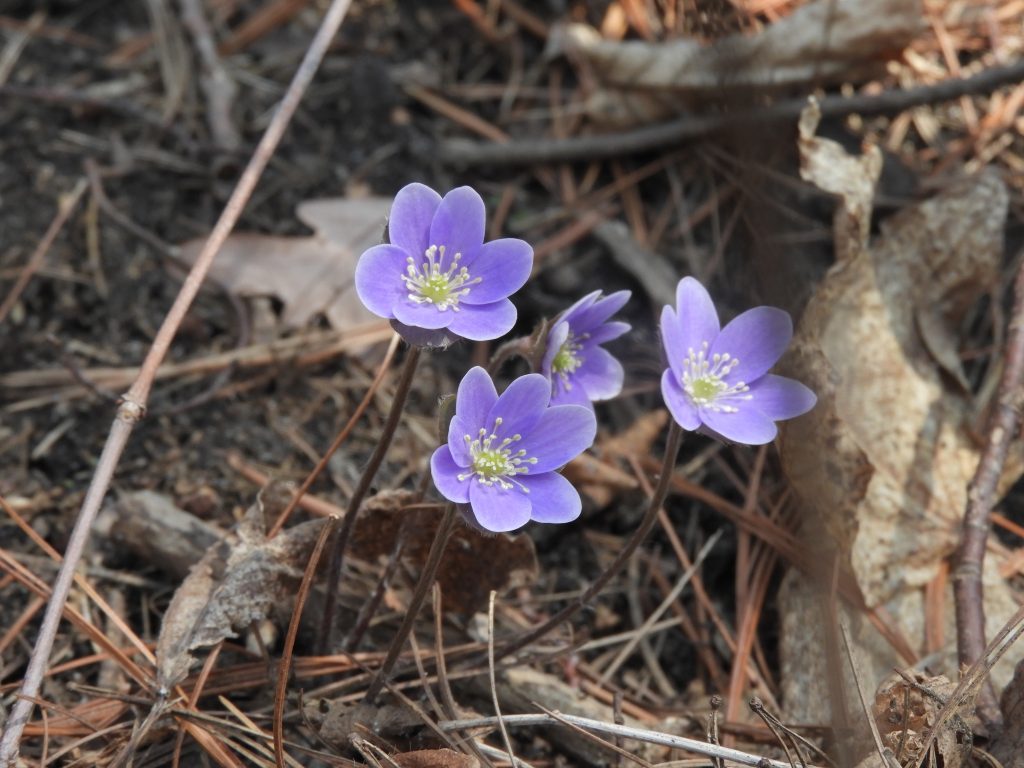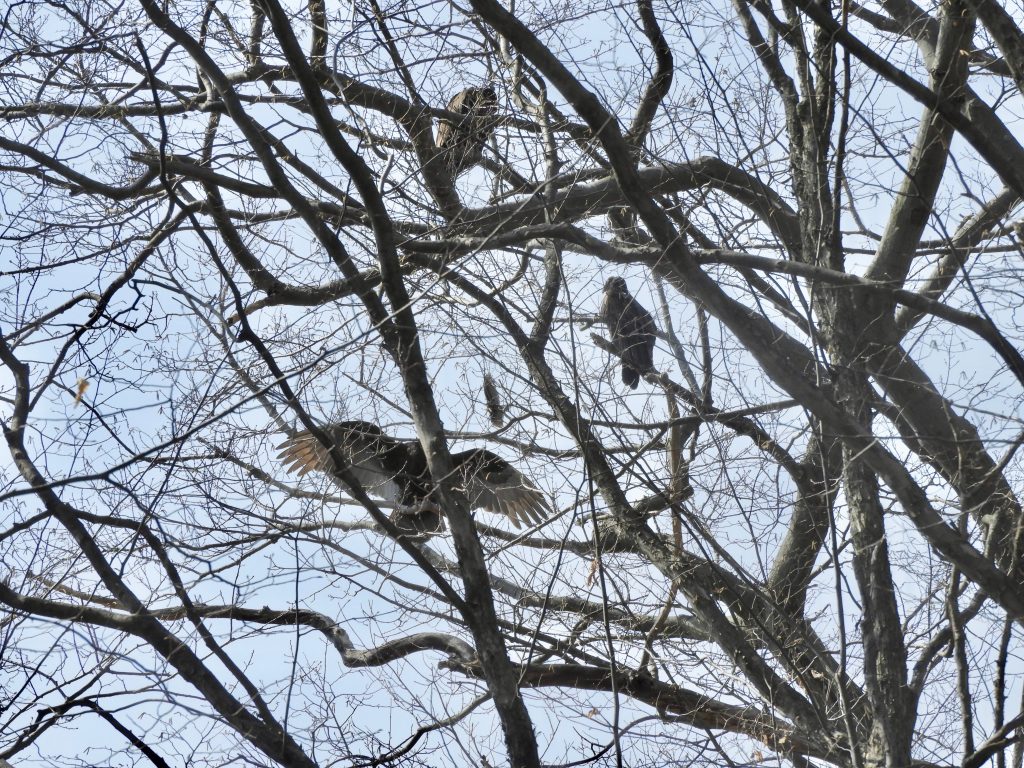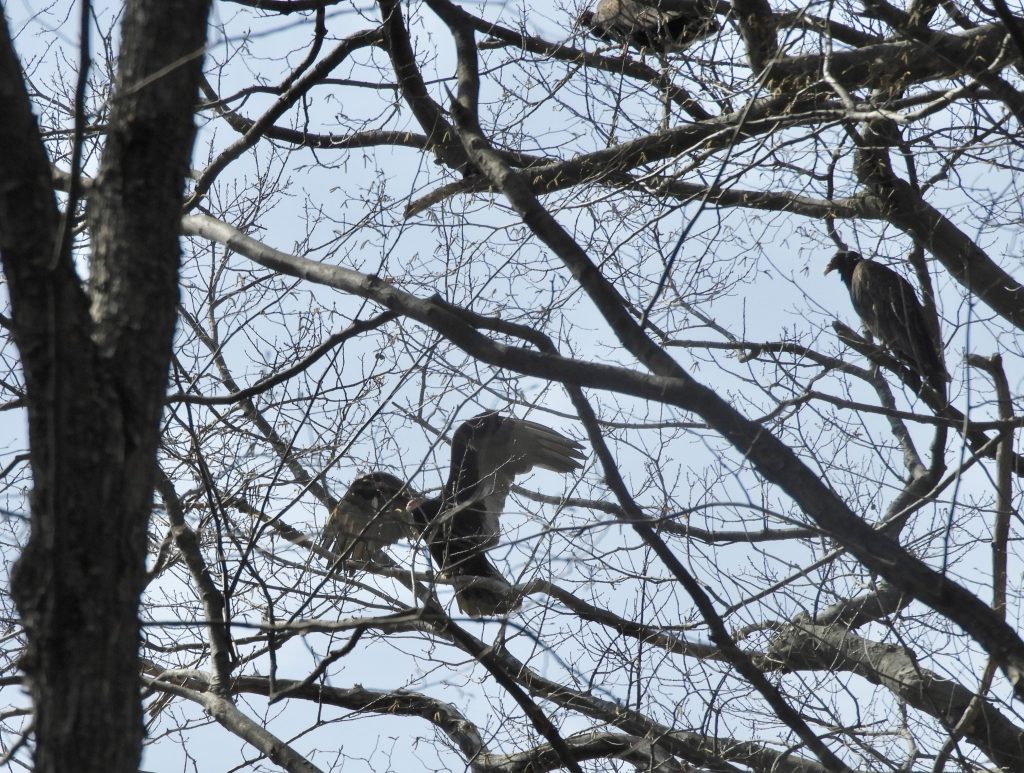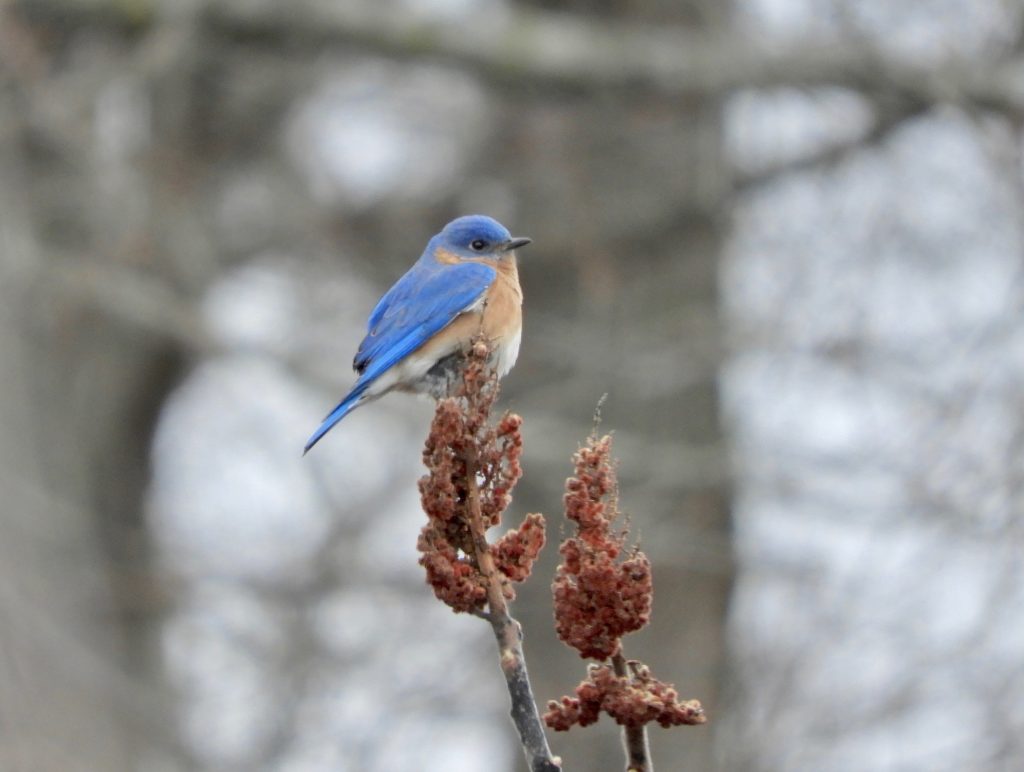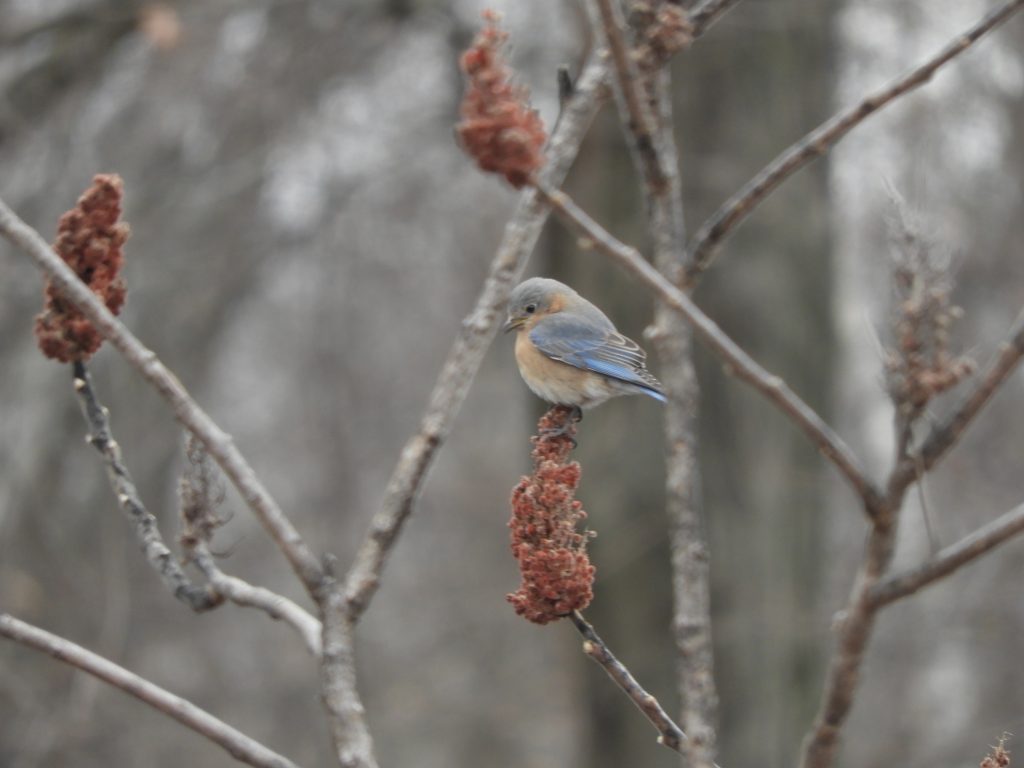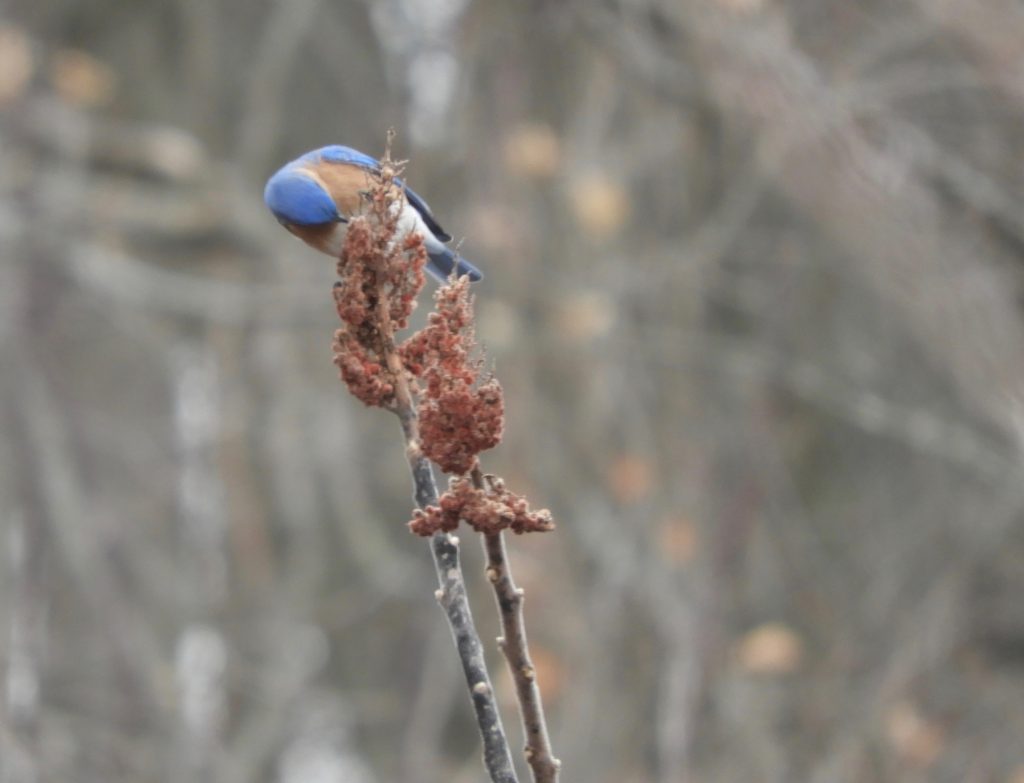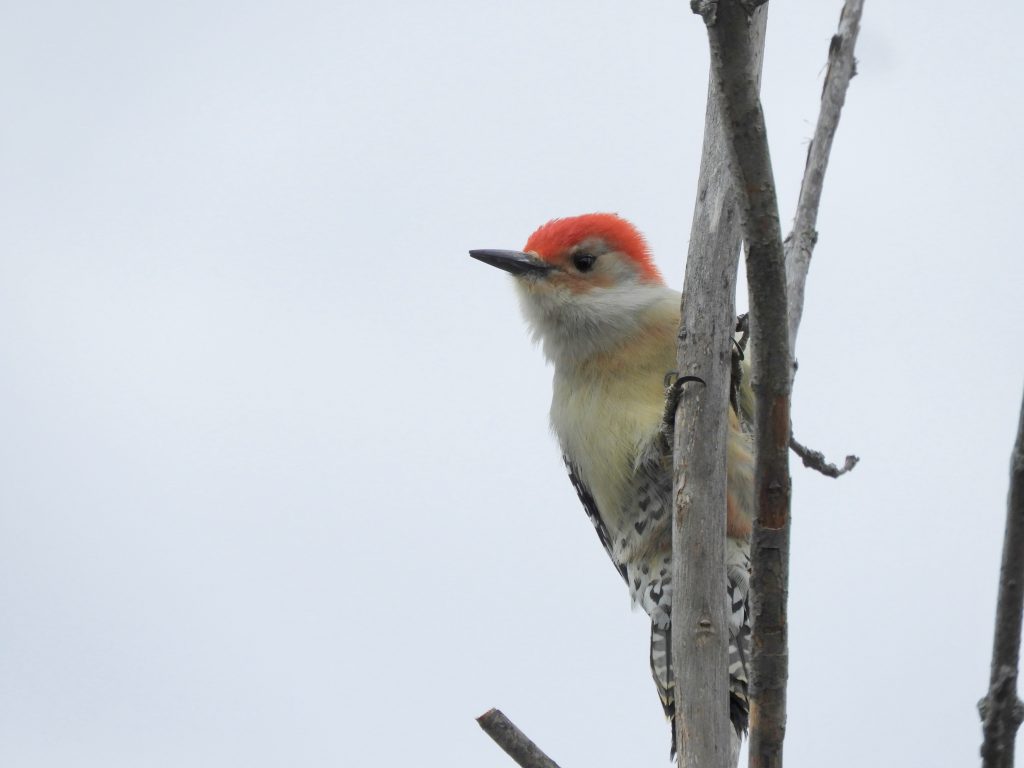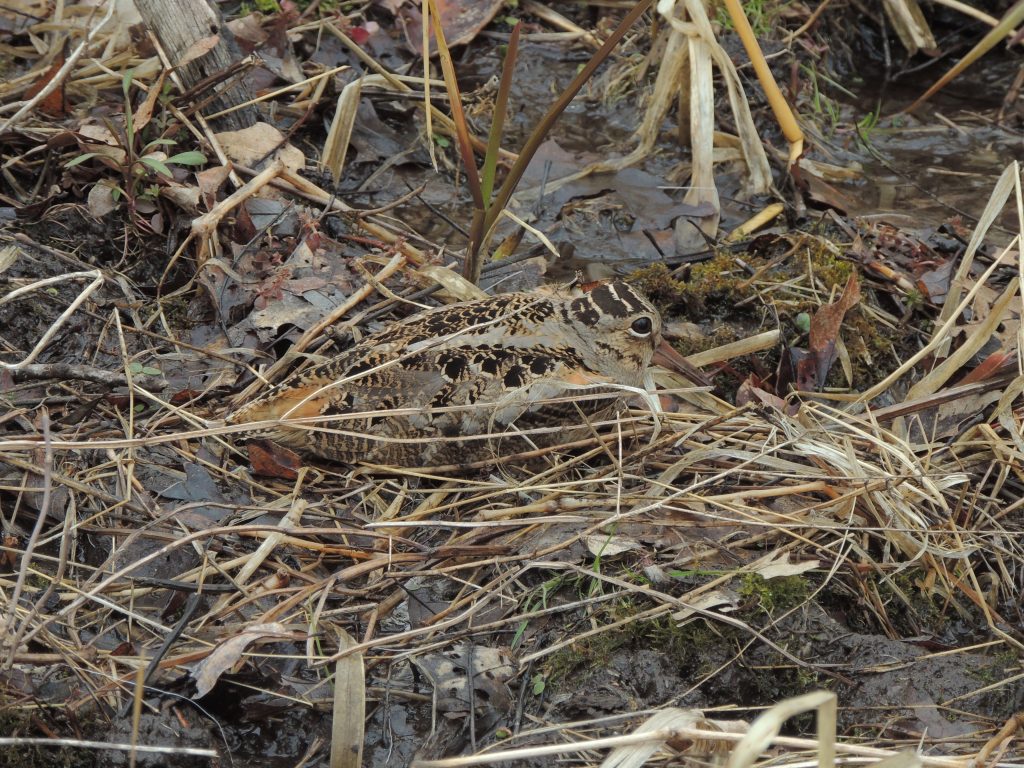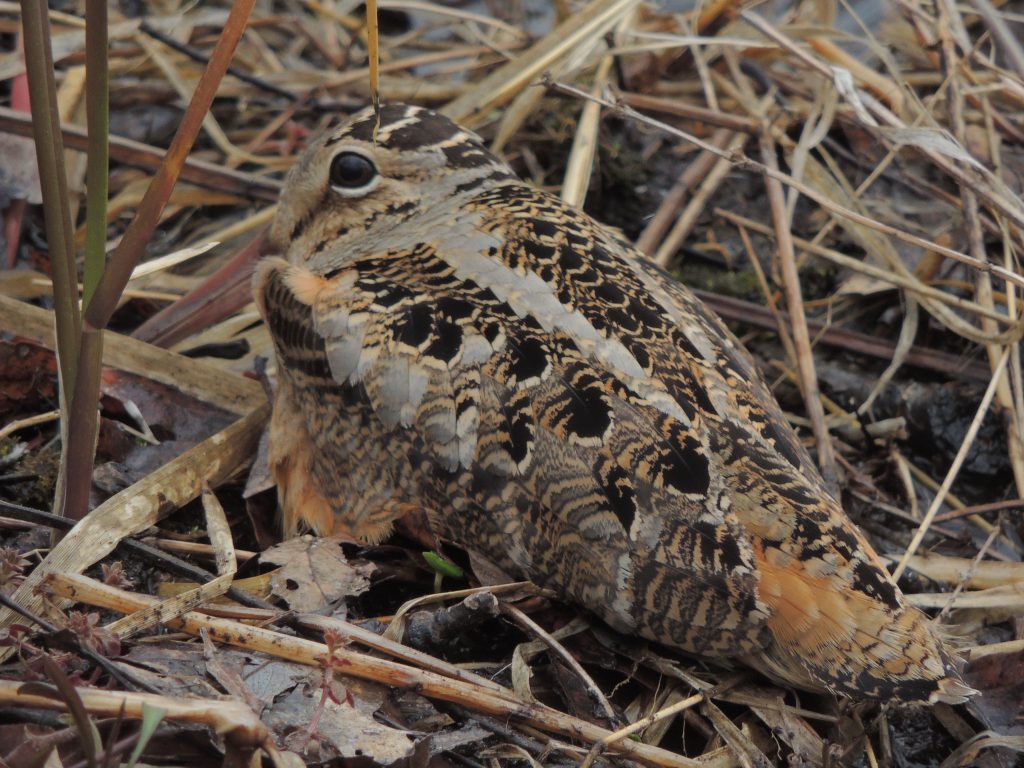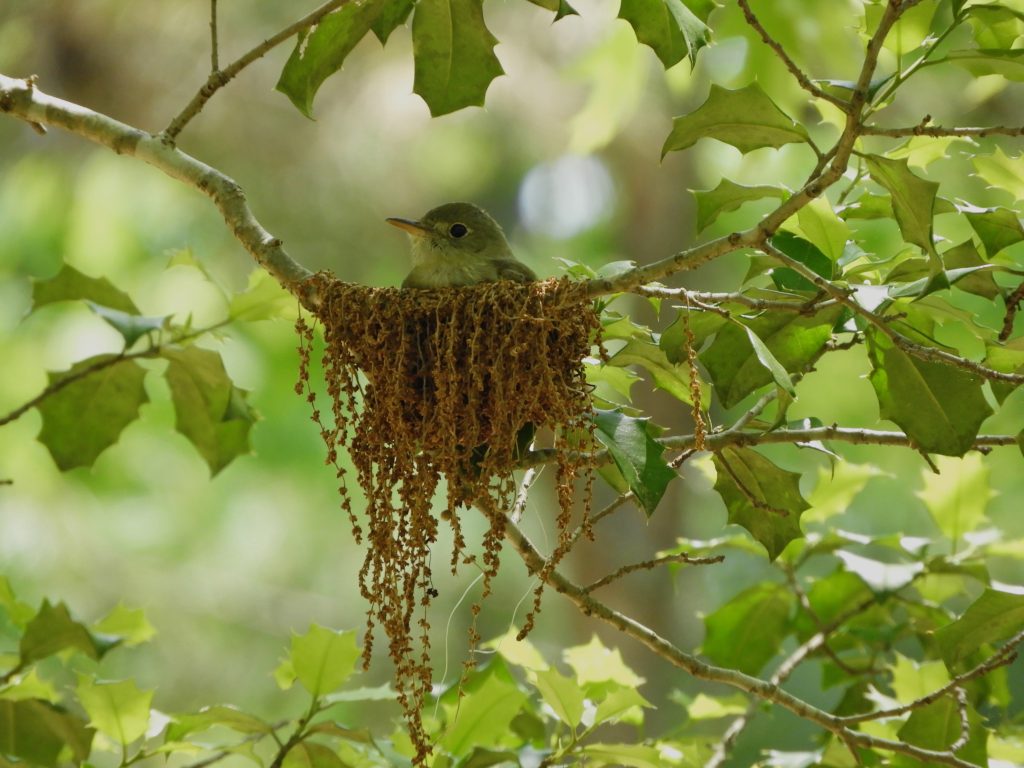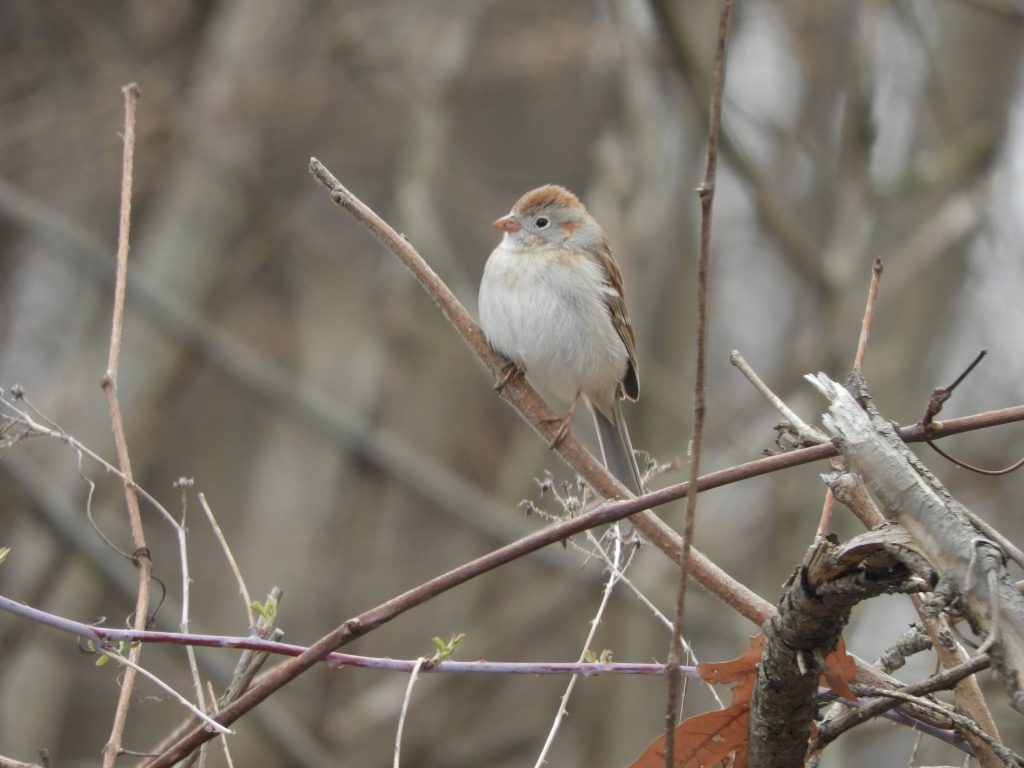
Lemmonville Rd, Burlington, ON. April 9th. 2021. I set out before breakfast to see if I could find a group of Wilson’s Snipes who had settled into a nearby wet field, as they do every April around this time. I was able to find just two: one busying itself probing deeply for some wriggly invertebrate meal, the other was almost overhead, doing its aerial territory-claiming display.
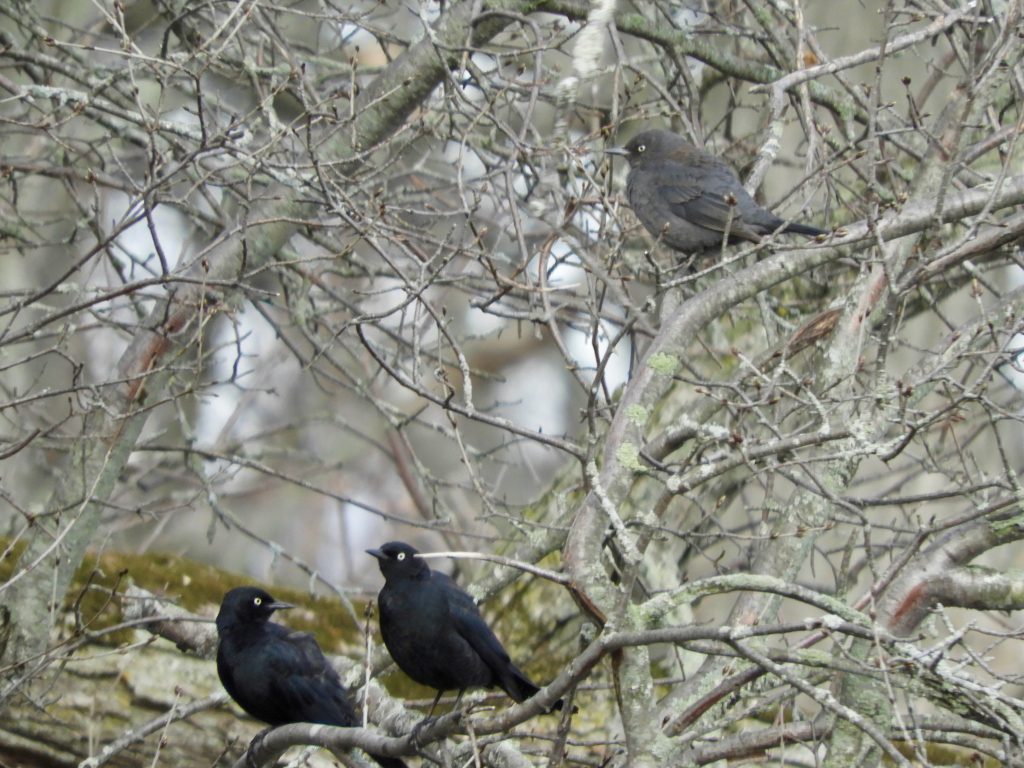
The snipes were a nice start to a day that was to produce several firsts. Not far from the snipes was a large flock of Rusty Blackbirds and, like the strutting Common Grackles of a month ago, they are interesting to watch when they choose to pick-and-flick for food around watery margins. If I had to sum up Rusty Blackbirds I’d say they are: Rather uncommon and we only ever see them during spring or fall migrations; Generally browny-black; Not songsters at all, managing only a funny squeaky sound like a gate-hinge that needs oiling; And having a startling white eye. It helps to see them periodically, for a refresher, because they can be confused with grackles. Above is a photo of two males and a female.
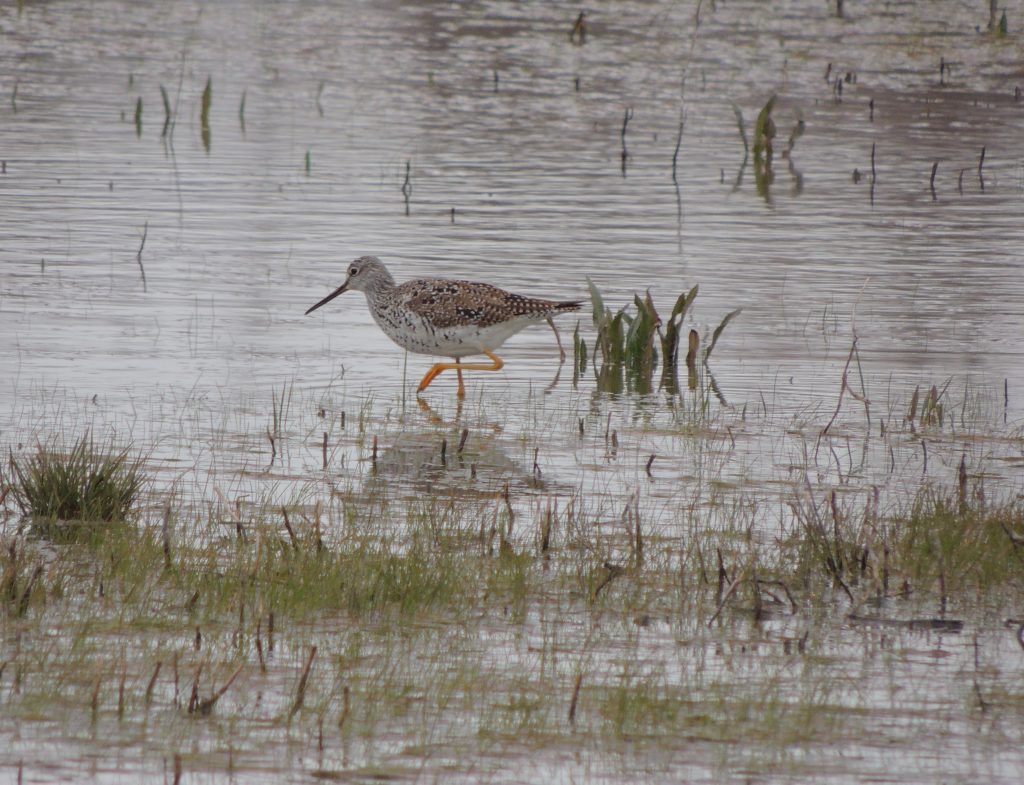
I stopped at another flooded field and was pleased to see two wading Greater Yellowlegs feeding and picking their ways delicately, like a couple of high-stepping ballerinas. They are on their way to their swampy muskeg breeding grounds of central Canada and southern Alaska.
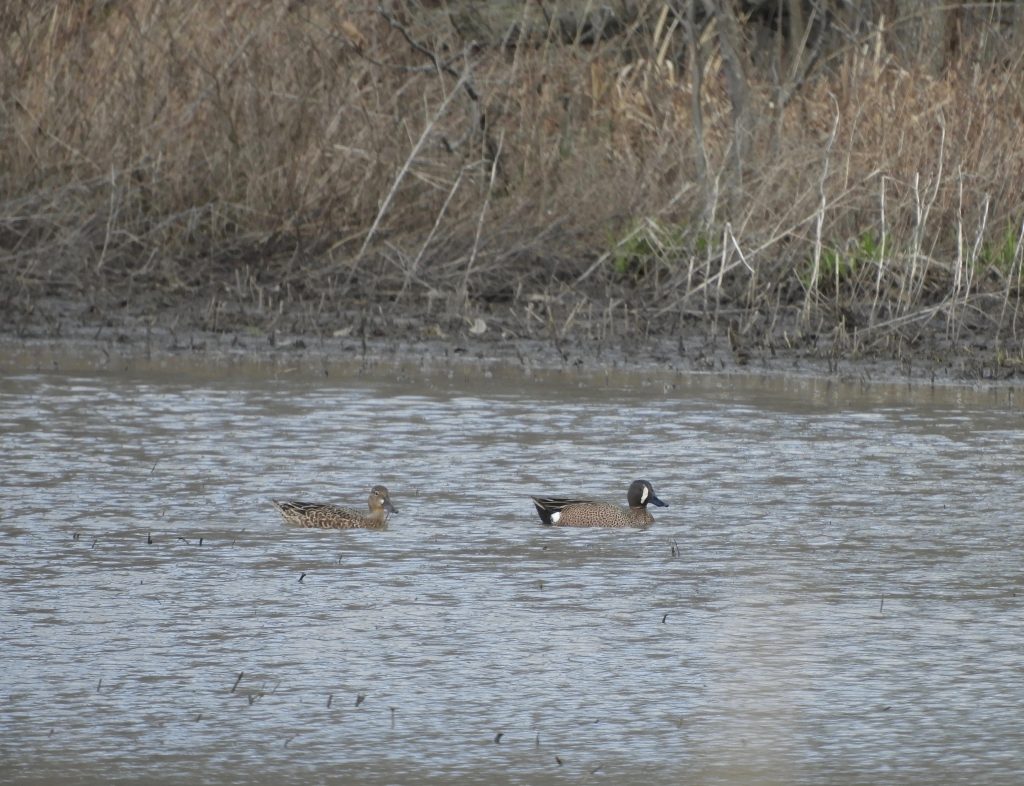
A low-flying Cooper’s Hawk panicked the yellowlegs and they left in a hurry, far beyond my line of sight leaving me to enjoy a pair of Blue–winged Teal, a duck that is better described as locally infrequent rather than rare. The yellowlegs and teal were both first-of-the-year sighting for me.
On a woodland-edge walk much later in the day, I binocular-checked a nearby communication tower and was pleased to see that a pair of Ospreys had returned to reclaim their nest site from last year. They weren’t there yesterday so I assume they had only just cleared immigration. The communication industry doesn’t like the way Ospreys appropriate the tops of cell towers and has taken to removing the nests and installing exclusion barriers. This nest is now active and I hope the industry shows the good grace and sense to leave it alone, it is illegal to interfere with an active nest. Finally, and My Bird of the Day, was a Field Sparrow heard singing its sweetly distinctive ping-pong-ball-coming-to-rest song, close-by but unseen, another first-of-the-year but plenty more of them to come, and they’re always welcome.
